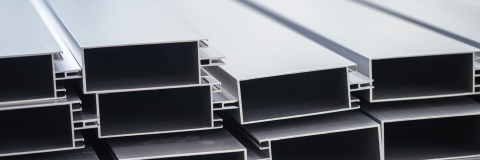The automotive industry is undergoing a rapid transformation driven by several significant factors, including shifts in consumer preferences, advancements in technology, and the implementation of more stringent regulations. Over the past decade, the demand for luxury finishes, improved safety measures, and environmental considerations have led to substantial changes in how vehicles are designed and built. Today, electric vehicles (EVs) represent one of the most profound shifts in the automotive sector, changing how cars are powered, their environmental impact, and their design. While internal combustion engines (ICE) continue to dominate the market, EVs are steadily gaining traction, with manufacturers working to overcome challenges related to vehicle range, charging times, and affordability.
As the automotive industry continues to evolve, these changes influence all aspects of vehicle design, from the materials used to construct the car to the engineering of key components like braking systems. Braking systems, a safety critical component of a vehicle, have transformed over the years, delivering enhanced performance, aesthetics, and operational efficiency.
Braking System Design
Since the early 2000s, wet hydraulic braking systems have been the standard in the automotive industry, as they have proven reliable and effective. However, they require brake fluid and a fluid distribution system, which increases maintenance costs and contributes to a vehicle’s environmental footprint. To address these issues, manufacturers are now exploring dry electro-mechanical brake systems, which offer shorter braking distances and lower long-term maintenance costs.
Yet regardless of the braking system used, calipers remain a popular choice for braking system design. Disc brakes with calipers excel at dissipating heat due to their open design, making them ideal for delivering high braking power to decelerate vehicles. These brake calipers, typically made from cast iron or cast aluminum, require surface treatments to ensure both aesthetic appeal and corrosion protection, thereby ensuring optimal performance and longevity. As warranties extend beyond the standard five-year assurance of zero corrosion, the demand for advanced corrosion-resistant finishes has grown. These high-quality surface finishes are essential to meet global automakers' increasingly strict quality standards.
Zinc-Nickel Coatings: A Key Solution for Cast-Iron Calipers
Zinc-nickel coatings have emerged as the preferred choice for applications with ferrous materials requiring enhanced corrosion protection. This is particularly true in assemblies that include aluminum parts, where the zinc-nickel coating also prevents galvanic corrosion. Zinc-nickel coatings provide high hardness, wear resistance, and continued corrosion protection even when exposed to high temperatures—critical properties for brake components subjected to extreme conditions.
Brake calipers are typically made from gray spheroidal graphite cast-iron, which has a unique electrochemical profile that makes acidic electrolytes the ideal choice for electroplating zinc-nickel alloy finishes. The development of zinc-nickel electroplating technologies, including the ZINCROLYTE™ processes, has revolutionized brake caliper finishing, delivering uniform coatings, exceptional corrosion protection, and improved thickness distribution. These advancements have allowed manufacturers to produce high-quality finishes that meet the rigorous demands of the modern automotive sector.
Enhancing Processing Efficiency and Uniformity
The latest developments in zinc-nickel alloy finishes not only improve the corrosion resistance of brake calipers but also offer increased processing efficiency. Modern electroplating technologies uniformly distribute alloy across the component, ensuring that every part of the brake caliper—from recessed areas to exposed edges—benefits from the protective properties of the zinc-nickel finish.
This uniformity is critical for ensuring the durability and performance of the brake system, as inconsistencies in coating thickness can lead to vulnerabilities and reduced service life. To achieve this, manufacturers have introduced new process innovations that allow for precise control over the thickness distribution of the zinc-nickel coating. Moreover, the use of low-foam plating systems has reduced maintenance and operating costs, making the process more efficient and environmentally friendly.
Brake Caliper Appearance and Consumer Expectations
In addition to performance and durability, appearance has become an increasingly important factor in brake caliper design. Modern wheel designs, particularly those found in luxury vehicles, often feature exposed brake calipers. These open-wheel designs allow manufacturers to offer unique color options or finishes that align with consumer expectations for aesthetic customization.
Zinc-nickel electroplating solutions have evolved to meet this demand by providing a variety of finishes, including semi-bright and matte options, which not only improve the appearance of brake components but also enhance their corrosion protection. The combination of these aesthetic and functional benefits makes zinc-nickel coatings the preferred choice for high-end automotive applications where visual appeal and durability are paramount.
The Role of Anodes in Electroplating
The use of anodes plays a crucial role in the electroplating process. Traditionally, metallic zinc- and nickel-anodes have been used in acidic zinc-nickel electrolytes. As the anodes dissolve during the plating process, they replenish the metals required to form the alloy deposit on the workpieces. However, the use of zinc anodes can lead to unwanted side reactions and require frequent maintenance of both the anodes and the electrolyte solution.
To address these issues, new anode systems have been developed that minimize side reactions and reduce the need for maintenance. These innovations not only lower maintenance costs but also reduce waste formation and energy consumption, making the electroplating process more environmentally sustainable.
Innovations in Aluminum and Anodizing Technology
While cast-iron remains a primary material for brake calipers, many automakers are transitioning to aluminum due to its lower weight and excellent material performance. Aluminum is especially well-suited for applications where lightweight, complex geometries are required, such as in modern braking systems. However, applying coatings to aluminum can be more challenging due to the complexity of aluminum alloys, which can affect layer continuity, corrosion resistance, and aesthetics.
Recent innovations in anodizing technology have overcome many of these challenges, allowing aluminum brake calipers to benefit from the same high-performance coatings as cast-iron components. These new anodizing processes deliver superior corrosion resistance, enhanced process efficiency, and improved visual appearance. The anodized finishes also provide better abrasion resistance and the ability to achieve deeper colors, allowing manufacturers to create visually appealing components that are both functional and durable.
The Shift Toward Aluminum and its Benefits
Aluminum’s inherent lightness makes it an ideal material for automotive applications where weight reduction is a priority, including today’s EVs. High-silicon cast aluminum alloys, for example, are perfect for producing lightweight, complex parts required for modern vehicles. The challenge with anodizing aluminum alloys has traditionally been the difficulty in achieving uniform coating thickness and high-quality finishes, impacting physical and chemical resistance. However, the latest anodizing technologies have eliminated many of these limitations, allowing for improved corrosion resistance and enhanced aesthetic finishes.
Aluminum finishes also offer several environmental benefits, including being more sustainable and recyclable when compared to organic paints. Along with this, the lower weight of aluminum parts contributes to vehicle weight reduction, leading to improvements in fuel efficiency in ICE vehicles and increased range in EVs, coupled with an overall reduction of emissions.
Looking Ahead
The automotive industry is evolving rapidly, driven by changing consumer behaviors, tightening regulations, and technological innovations. These developments, particularly in electric vehicles, autonomous driving, and lightweight materials, are reshaping how vehicles are designed and manufactured. The materials and technologies used in brake systems are undergoing significant advancements to meet the new demands of the industry.
Today, a diverse range of product offerings exists for cast-iron and aluminum brake components, with manufacturers continually innovating their processes to meet the needs of automakers. The development of advanced surface finishing technologies ensures that brake system components provide the necessary durability and appearance while enhancing environmental sustainability. As the automotive sector continues to evolve, these innovations will play a critical role in shaping the future of vehicle design, delivering safety, performance, and compliance with increasingly stringent regulatory requirements.
Read the full article in the March 2025 edition of Industrial Machinery Digest











